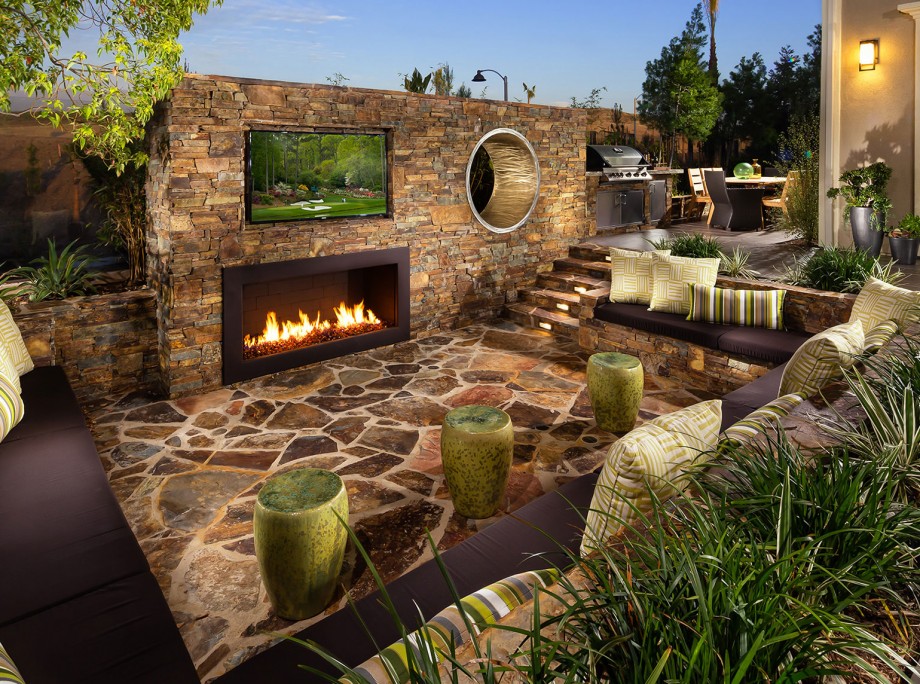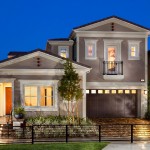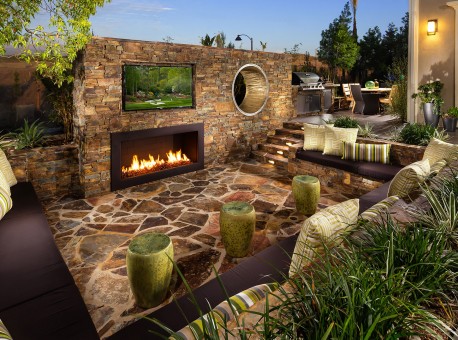Nick Lehnert – Make the Most of Outdoor Spaces
Professional Builder
January 11, 2016
Grabbing buyers’ attention with an appealing outdoor room is as smart a strategy for a builder in St. Paul as it is for one in Santa Fe. That’s because outdoor spaces are a selling point for new homes nationwide, not just in warm weather places. An outdoor room offers a private, peaceful, fresh-air place that helps buyers take full advantage of a beautiful day. Who doesn’t like imagining that?
Outdoor spaces aren’t just for custom homes or an elite niche of buyers, either. In order to sell homes, you need to deliver exterior living areas that are within reach for every buyer profile. Here’s what to consider to make outdoor rooms a naturally integrated part of a plan that helps the whole house live bigger.
BACK, FRONT OR CENTER.
The first question is this: Where is the outdoor space in relation to the rest of the plan? If you offer a series of plans, each with the outdoor space positioned differently, each plan form will live a bit differently.
So, side, front, or rear pocket space? Wherever the outdoor space is located, it’s important to pierce the house form so that the exterior space is contiguous to the interior space, gets regular use, and thus increases in value. The style of the architecture itself may determine where it makes the most sense to put the outdoor area, and this, in turn, will help organize the rest of the plan. Spanish- or Tuscan-style homes, for example, often have forecourts. Craftsman homes feature an iconic front porch. (Adding a side court creates potential connectivity to that front porch.)
BACK.
A rear outdoor space is one of the easiest, most cost-effective and versatile ways to add an outdoor room to a house. For maximum use, rain or shine, include an overhang. Depending on the width of the house and adjoining lot considerations, the outdoor space can be set at the right, left, or center rear of the house.
The outdoor room should feel intimate enough for quiet time, but spacious enough for barbecues. If it functions as a croquet court and kids’ play area, it may also need to house a bar and grilling area. If your back patio is also the pool area, it may need to be an outdoor dining room, too.
Scale becomes crucial with backyards. A minimum of 10 feet deep and 12 to 13 feet wide is needed; anything beyond that is great.
FRONT.
An outdoor forecourt does double duty, making the entryway the private space, with an entry gate or outside door and a surrounding wall or hedge. That wall or hedge needn’t be full-height-it can be 4 feet tall or more, depending on how you want to use the front space.
Popular in Spanish and Tuscan architecture, the front court offers privacy from the street, yet provides the sense that the street is nearby. Forecourts are great places to set outdoor fireplaces (a popular outdoor feature). The forecourt option often appeals to families – parents can relax with friends while keeping an eye on the kids playing outside. If the wall or hedge is full height and the courtyard is completely private, a water element can also be used.
Because you’re extending the style of the house via wall treatments and trelliswork, the forecourt features need to play well with the front elevation of the house. Forecourts can be distinctive; they give interest to both the house and neighborhood. The impact of that space creates significant value to the buyer who values spending time outside the front of the house with children and neighbors. Feeling connected to neighborhood activity.
Scale is important here, too. Forecourts usually need to be at least 16 feet deep and 16 to 20 feet wide.
CENTER.
Outdoor space that’s in the center of the plan becomes more private by nature of its central position. It gives you the option to connect to more of the rooms in the house-up to three walls of the house can be open to the private area.
Right or left center – Because you’re only connecting two parts of the house to the outdoors, this is a tried and true solution. It’s the easiest of the centered configurations to execute because you’re not complicating the design of the house. An enclosed side yard gives you a chance to link the outdoor space to rooms in which buyers spend most of their time. Young families prize this kind of connectivity because it’s also secure: a side yard where adults can cook dinner while keeping an eye on kids running around in a safe, private place.
Side interior court – Because it’s enclosed, this, too, is completely private space. When the outdoor space is positioned at the side of the house, there’s a big question of how it gets used. If the space connects to the dining room, how does it expand the dining experience? If it opens to the kitchen, will there be a kitchen garden’ Does it enhance the dining experience, and is it a place where parents can supervise kids? Is it secure? Will it connect to the master bedroom? If so, how does the space become usable to the bedroom? Is that space public or private?
Center court – Some call this configuration a donut house. It features glass on three or even four sides, offering a variety of choices as to how the house gets used. Historically, this was called an atrium, but the location has evolved due to the rising demand for privacy surrounded by architectural features. Consequently, the scale of that atrium has increased-buyers want to get out there and use it, rather than just having it be a garden with a water element that looks pretty but doesn’t leave room for sitting. Boomers often prefer this option because it offers more privacy than an outdoor yard in the back.
Scale is also key with donut houses. If you’re stingy with square footage, the space becomes a throwaway, feels isolated and won’t get used. In a C-shaped home with a center court, for example, the outdoor space needs to be a minimum of 250 square feet for gatherings and for impact. What’s the smallest lot you can do the center court on7 Think 60 feet square. That sounds small-you won’t have a 250-foot square interior space, but you’ll still have the feeling of an outdoor room that feels like it’s outdoors. A caveat: This is also one of the most expensive ways to design an outdoor space because you’re breaking up the rooflines and will need additional trusses and framing.
An inviting exterior room is more than just a nice amenity: It’s a golden opportunity to spark buyers’ imaginations. Accomplish that, and your houses will sell like hotcakes.


